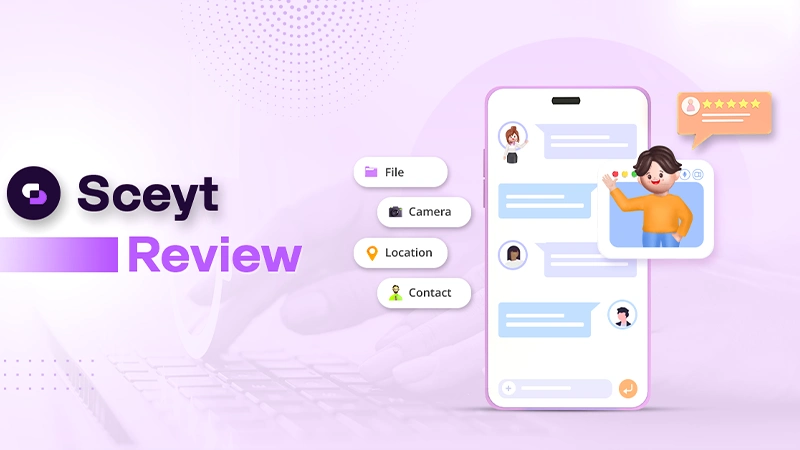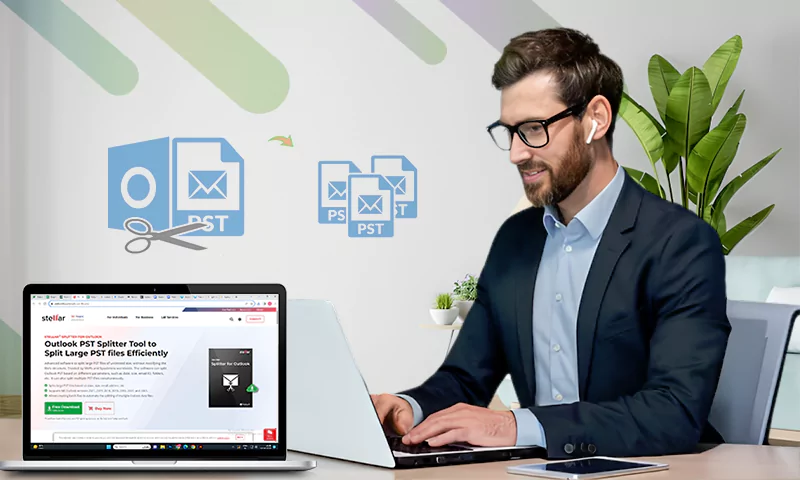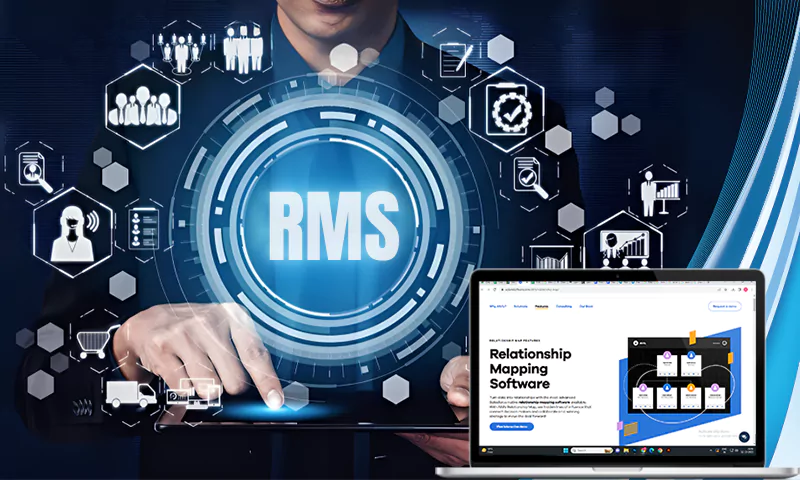EdbMails tool to Convert EDB to PST for Common Exchange Server Issues
The EDB file is a Microsoft Exchange database file that contains all of the user’s mailboxes. Because EDB files are prone to corruption and disasters, they must be backed up regularly or converted to a suitable format that can be stored locally. The most common advantage of converting EDB to PST is that the PST file format is more accessible and can be imported into any version of MS Outlook as well as various other email clients that support the PST format. Because PST files are independent of the Outlook user profile, they may be easily archived or transferred from one computer to another without encountering issues. You can access your mailbox data such as messages, contacts, calendar, and so on for litigation / legal requirements, references, or for any other reasons.
By making use of EdbMails EDB to PST tool you can convert mailboxes from offline Exchange EDB files to PST files, which can then be seamlessly opened in MS Outlook. It is an easy way to ensure all such information is accessible whenever needed irrespective of Exchange server downtime, corruption, or database failures. Before we get into how EdbMails can save your day from unforeseen situations, let’s first understand why native methods of recovering EDB files don’t work as well as they should.
Limitations of Manual (native) EDB Recovery Methods
EDB recovery can be completed using several native methods available for you. However, these methods are neither suitable for large-scale recovery and export operations, nor do they guarantee data consistency once the recovery is complete. Let’s look at an example. In a large organization, there are thousands of users whose mailboxes and data are stored in an EDB file. When such an EDB file must be manually recovered due to an unforeseen event, data consistency is put to the test. The recovered data must be an exact copy of the lost data. Critical information cannot be recovered if bits and pieces of data go missing which is where EdbMails EDB to PST converter tool comes to the rescue. Let’s take a look at the drawbacks of using the traditional (native) recovery method.
- An offline EDB file contents cannot be accessed directly.
- ExMerge and other native utilities are no longer supported by newer versions of Exchange.
- As a result, you’re left with PowerShell cmdlets that are not only complex but also time-consuming and difficult to use.
- An Exchange administrator must understand the entire recovery and export process thoroughly.
- Manual methods, if used incorrectly, can result in further data corruption or, in the worst-case scenario, total data loss.
- There is no tree view to view the recovered files and export only the items you need.
- Native methods do not generate a log file to cross-check the status of the export operation.
Few Use Case Scenarios Where EdbMails EDB to PST Converter can Come Quite Handy
From the preceding discussion, it is clear that native methods are unsuitable for working on critical data or when a quick recovery is required. Let us take a look at the use case scenarios where EdbMails can overcome the aforementioned challenges and drawbacks of the traditional recovery process.
The most important aspect is that EdbMails does not require Exchange Server or Active Directory services for its Exchange EDB files recovery and export. You can install the application on any computer with Windows (such as Windows 7, Windows 8, Windows 10, Windows server, etc.) operating system and perform the recovery/export operation.
1. Maintain Exact Folder Structure in the Target
You can use the EDB to PST utility to archive Exchange mailboxes by converting offline EDB mailboxes to PST. The folder structure of the PST archives will be identical to that of the source EDB file. During the recovery and export process, the contents of the source EDB file will not be altered in any way.
2. Reduce Large Size EDB Files on the Exchange Server
In large businesses, there might be thousands of mailboxes and associated items, which adds to the size of the Exchange server setup making it quite bulky. This complicates things for Exchange server administrators, who will have to keep track of backups regularly. It also raises the likelihood of corruption and inconsistency in the Exchange database. EdbMails EDB to PST tool can therefore be used to convert large size EDB files to PST freeing up space on the Exchange server.
3. Recover Deleted Files and Emails from the Mailboxes
EdbMails recovers deleted mailboxes and their contents that you thought were irrevocably lost. EdbMails display folders hierarchy as it is in your Exchange server. The deleted contents can be easily found in the folders hierarchy (folders like Recoverable Items and Deletions etc.) under each user mailbox.
4. Split Mailboxes into Many Smaller PST files
Exporting a large EDB file to PST makes the target PST file size oversized. When imported back into MS Outlook, such an oversized PST file is prone to corruption. EdbMails tool has a feature that intelligently splits the target PST into smaller chunks to prevent PST corruption.
5. Migrate Mail Items from EDB to a New Exchange/Office 365 Account
In some cases, it may be necessary to export the EDB file directly to a new Exchange or Office 365 account. EdbMails has a ready-made solution to this problem and can directly export mail items from an EDB file to Exchange/Office 365, which is useful for organizations that need to migrate to a new account quickly.
6. Incremental Migration to Avoid Duplicate Mail Items
A true incremental migration of an EDB file to an Office 365 / live Exchange server will prevent the creation of duplicate items in any form on your server during the subsequent migrations. By only migrating newly added items after the previous migration, incremental migration saves time and bandwidth. This will improve overall migration performance, make your migration job easier, and avoids creating duplicate mail items on the target.
7. Export EDB to Other Formats Such as EML, MHT, and HTML
In addition to Outlook PST, the EdbMails EDB recovery tool is flexible and allows you to save mail items in other common formats such as .EML, .MHT, and .HTML. This is a noteworthy feature for those who want to recover corrupted EDB file contents but do not have Microsoft Outlook installed on their system.
8. Exclude Unwanted, Junk Folders Export
Mailboxes routinely become clogged with junk and unwanted messages. Such junk emails must be weeded out during the EDB recovery and export to save precious space and bandwidth. For selective mail migration, manual methods lack extensive filtering options. EdbMails includes an innovative feature that allows you to apply filters to include or exclude specific mail items and folders. By default, the junk folder is excluded from migration, making it very easy to remove unwanted content from your old mailbox.
Convert EDB to PST Using EdbMails EDB To PST Converter
The installation process is pretty straightforward.
- Download the setup from the EdbMails website.
- Browse for the location of the EDB file.
- Click on the Export EDB to PST button to export the EDB file to PST
- Your EDB file will be recovered and exported to a PST format.

EdbMails is an Affordable, High-Security EDB Recovery Tool with Powerful Features
EdbMails is a high-ranking recovery and migration solution for Exchange and Microsoft Office 365 due to its powerful features and high security. It is one of the best and quick recovery tools to convert EDB to PST for common EDB problems. Additionally, it offers free 24/7 technical support, lifetime license plans with 75% plus discounts making it a very affordable utility for small and large organizations as well as for individual and personal use.
Conclusion
Manually converting an EDB file to a PST file misses out on important features that come in handy in a variety of scenarios. EdbMails EDB to PST converter is an easy-to-use tool with advanced features that can help you recover and export an EDB file to PST. You can try the tool for free by downloading a trial version or contact support for an on-demand live personalized demo.
Share
















